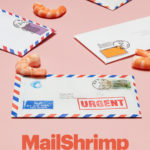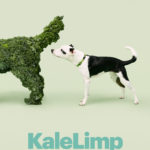In the past 8 years, MailChimp, an email automation platform, has gone from SMB darling to mainstream royalty. How? By creating the year’s weirdest campaign: “Did You Mean MailChimp?” MailChimp’s first major marketing campaign blended the brand’s quirky identity with a series of cultural activations spanning film, music, and fashion. At Northside Festival 2017, Mark DiCristina (MailChimp‘s Senior Brand Marketing Director) and Julian Cheever, (Droga5’s Executive Group Director) discuss the conceptualization and execution of this unconventional campaign and how they allow entrepreneurs to “grow without compromise.”
Breaking the rules of storytelling
To get noticed, sometimes you have to break some rules; MailChimp did just that with their campaign narrative. But before they could break rules, the company had to understand its brand identity and the channels that best capture its vision. Eight years of rapid growth (and sponsorship of popular podcasts like NPR’s Serial) had already resulted in a cult following, so MailChimp understood its existing customer base, but they wanted to push further, reaching a wider audience. “We wanted to make it feel like MailChimp, but also go into uncharted territory,” says DiCristina.
The result ended up being very unique and very MailChimp. MailChimp launched a series of new “products:” FailChips, a line of potato chips made of chip crumbs; MaleCrimp, an outrageous fashion trend which made its way to New York Fashion Week; VeilHymn, a musical collaboration between Dev Hynes and Bryndon Cook; three artistic short films (JailBlimp, KaleLimp, and MailShrimp); and a few web experiences like NailChamp and WhaleSynth. Straddling a fine line between artsy and downright absurd, these ads served as tools to articulate definitive qualities of the MailChimp brand and voice. Despite spanning a wide range of visuals, the “products” all bore one thing in common: their names all sounded like “MailChimp.” Keener observers might even spot Freddie, MailChimp’s logo and mascot, lurking in an inconspicuous corner.
Recounting the projects, DiCristina explains that the campaign was innovative from an internal perspective, as well. “[With FailChips], I never expected to work at a software company that made a tangible product.” The campaign made clear that MailChimp thrives on experimentation and doesn’t take itself too seriously. “[With MaleCrimp], we wanted to see what would happen if we not only started a product, but a trend, and see how people would react,” DiCristina says. “There was a nice serendipity when we spotted French Vogue models crimping their hair during men’s fashion week.” By targeting specific subcultures, MailChimp encouraged its audience to connect the dots and have fun—even if that meant overlooking their brand presence at first glance. “Being okay with who you won’t connect with is a real catalyst to great work,” says DiCristina.
From Brand Awareness to Product Features
Following its brand awareness campaign, MailChimp reached out to SMB owners with ads featuring a black hole. “It was inspired by the anxiety small business owners have about how to spend a small budget. MailChimp is the anti-hero who saves the day,” says DiCristina. These ad spots followed a more traditional online ad campaign strategy. Though their purpose is to cater to a smaller audience and show specific capabilities of MailChimp’s platform, the whimsy remains intact.
Earning One Billion Impressions
To quantify their success, MailChimp measured the number of people talking about their campaign. The results were astounding: they had paid for 500 million impressions. They earned one billion—twice what they’d paid for. The VeilHymn single alone was streamed 1.5 million times, while the three short films played before features in almost 300 theaters across the country.
The secret to MailChimp’s success lies in its sensitivity to the needs of its customers. The brand understood that SMBs, for example, are more often strapped for time and resources, and they’re generally not marketing experts. “We knew we were starting with this big message,” says DiCristina, “but we knew we were going to follow it with how the product can actually help you grow your business.” To further add value to their campaign message, MailChimp wanted to lay out how its powerful set of tools can break down complexities to make marketing feel simple and accessible. “We want to lead by example and show them that it can be done.”
Want more? Subscribe to our newsletter for more great content or see how you can increase your email marketing impact today.



